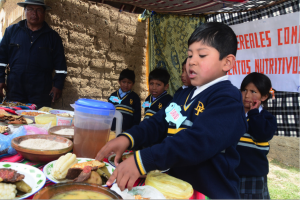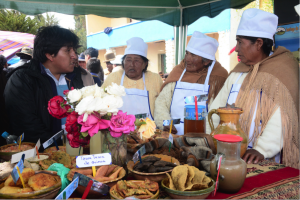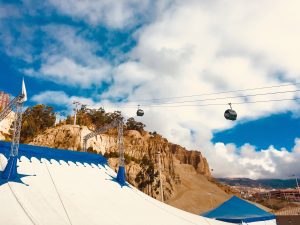
The migration of youth from rural landscapes to urban centres is occurring at a rapid pace throughout the world. When youth abandon the farm for the city, rural communities are often left to the elders and when they leave us, much of the knowledge they hold about their place can be lost forever.
The Bolivian altiplano region, around and to the south of Lake Titicaca, is no exception to this trend and the draw of education, health care and the dream of a steady income is difficult to resist for young people reluctant to continue their family’s challenging farming lifestyle.
The Aymara community of Santiago de Okola, located on the south eastern shore of the lake, may be breaking the pattern through its community-based tourism project that offers family homestays and a variety of adventure and education activities to visitors. And with the support of The Cultural Conservancy, an Oakland, US based organization supporting small-scale projects in indigenous communities in various countries, the flow of youth to the city may just slow down a bit.

Through an innovative partnership, the community, La Paz-based travel company (and ATTA member!) La Paz on Foot and The Cultural Conservancy have been coordinating a series of activities designed to strengthen participating families capacities in guiding, cooking and other services – all with the participation of youth from the village.
This past November, for example, the local tourism association, ASITURSO, La Paz on Foot and the village school organized the community’s first “Productive Fair” that showcased the diversity of crops cultivated and foods prepared by community members. Elders, parents and schoolchildren alike participated in the fair and demonstrated their skills in cooking, medicinal plant use and knowledge about the different crops and crop varieties.
Chefs from the nearby city of La Paz were invited to participate in a cooking competition in which everyone was a winner and from the looks on the faces of young and old the event was a success. These kinds of activities go a long way towards helping youth and elders re-value the richness of their place and may just convince some of the young community members to stick around and keep their grandparents’ traditions alive for a while longer.
